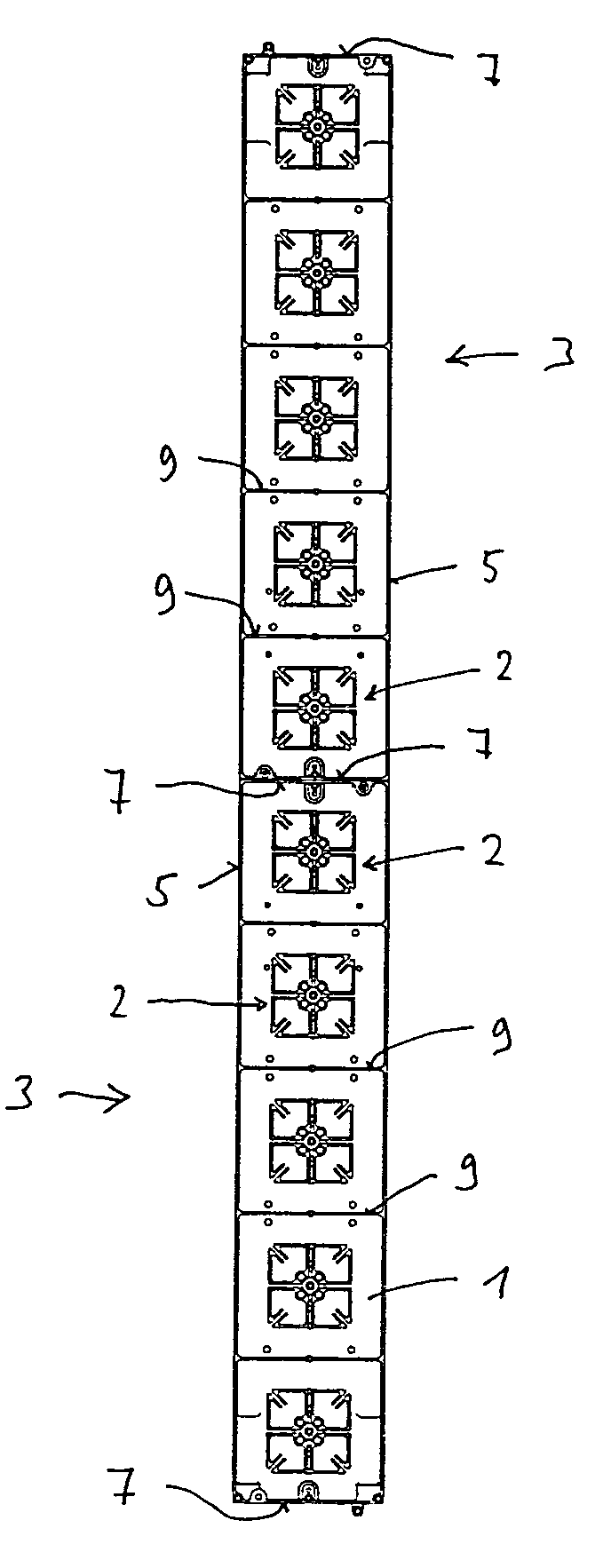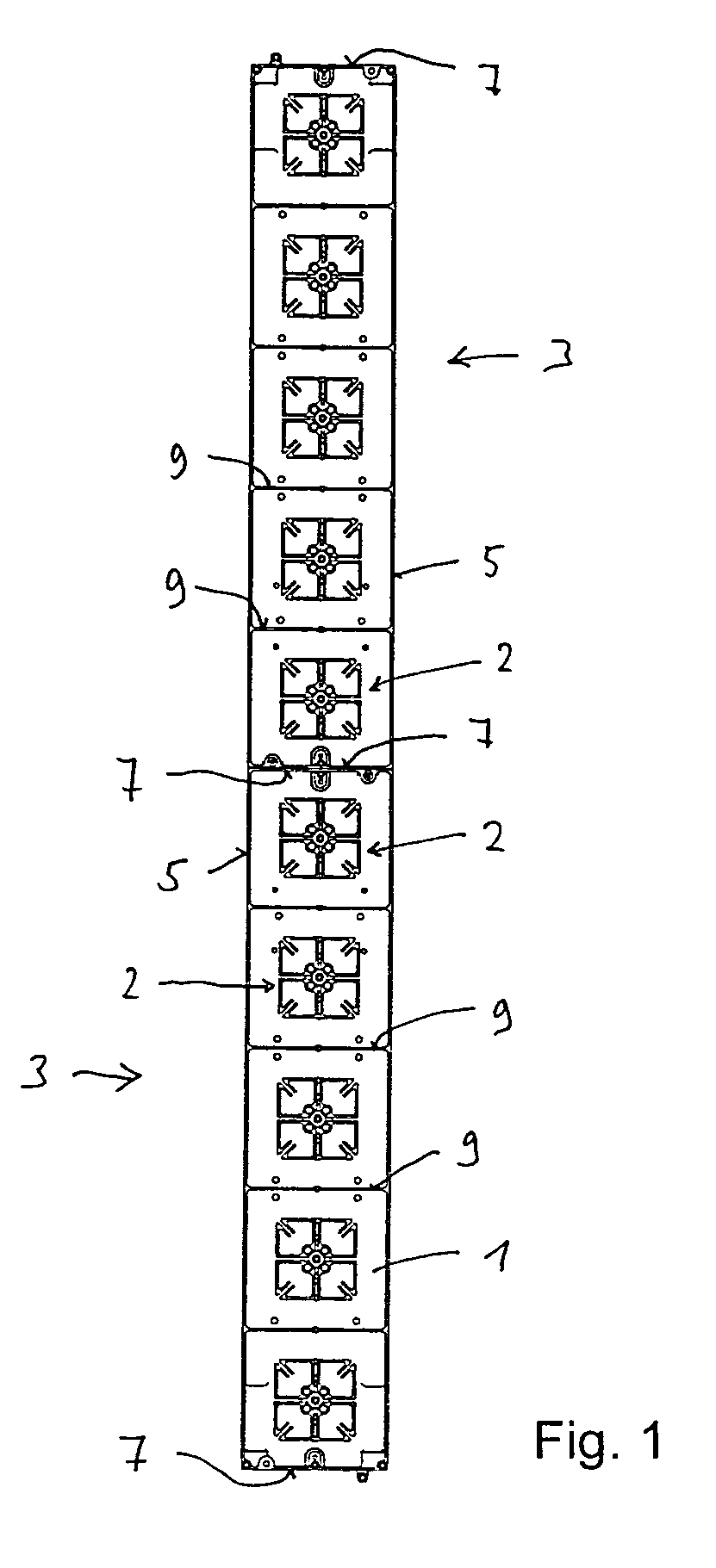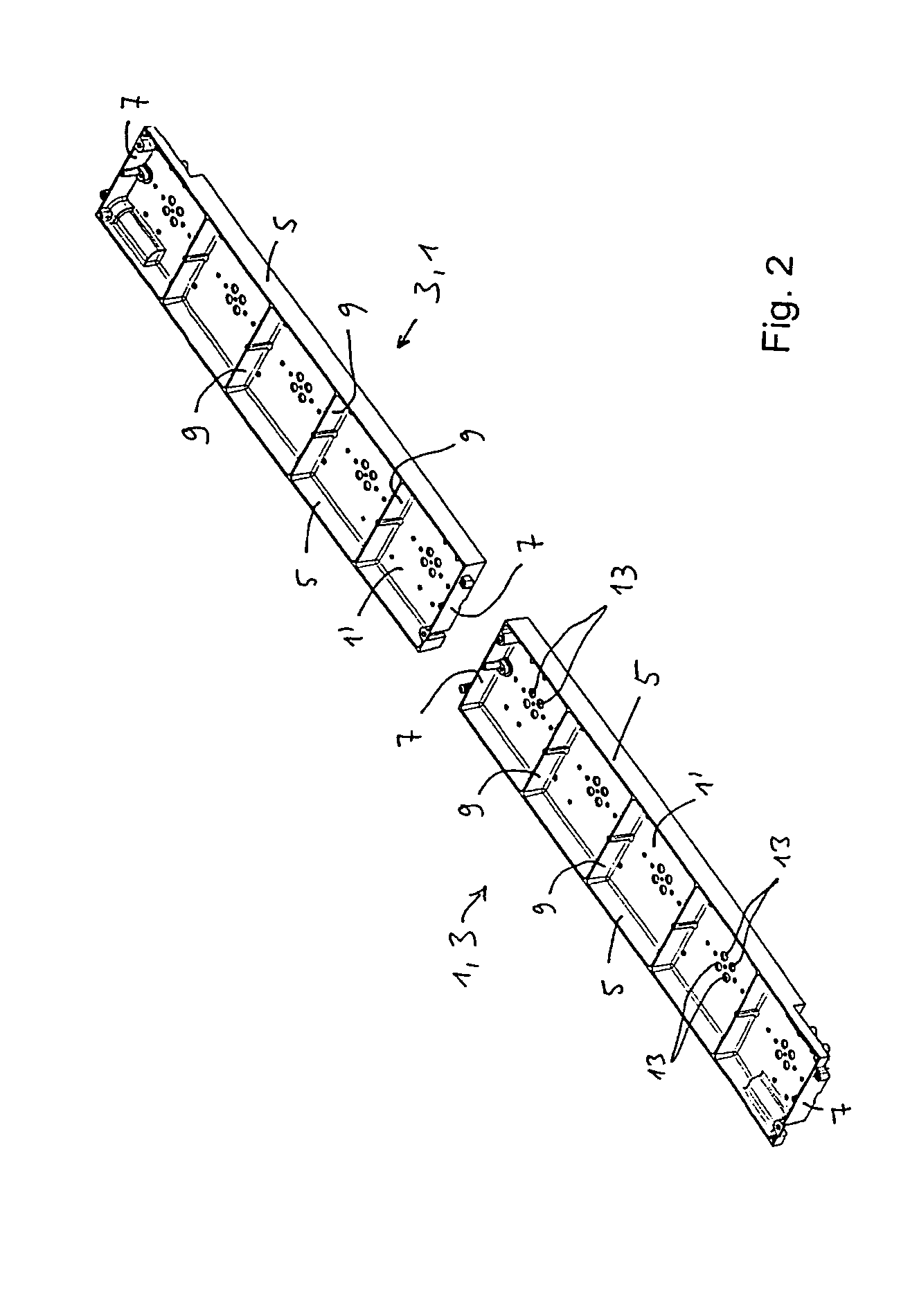Reflector for a mobile radio antenna
a mobile radio antenna and reflector technology, applied in the field of reflectors, can solve the problems of large number of different parts and the major assembly effort associated with them, disadvantages of polarised antenna unit combinations, comparatively high production costs, etc., and achieve the effect of improving mechanical reliability, avoiding undesirable intermodulation products, and adjusting production tolerances
- Summary
- Abstract
- Description
- Claims
- Application Information
AI Technical Summary
Benefits of technology
Problems solved by technology
Method used
Image
Examples
Embodiment Construction
[0037]FIG. 1 shows a schematic plan view of an exemplary illustrative non-limiting reflector 1 which, in the illustrated exemplary arrangement, is formed from two reflector modules 3 whose end faces are joined together and in each of which four antenna element arrangements 2 are arranged one above the other in the vertical direction. The illustrated antenna element modules are, from the electrical point of view, modules in the form of cruciform antenna elements which radiate (e.g., can transmit and receive) two mutually perpendicular polarizations. These are preferably antenna elements arranged in an X-shape, in which the polarization planes are aligned at angles of plus 45° to minus 45° with respect to the horizontal and vertical. This specifically illustrated and indicated type of antenna element is known for example, from the prior application WO 00 / 39894. To this extent, reference is made to this prior application, which is included in the content of the present application. How...
PUM
 Login to View More
Login to View More Abstract
Description
Claims
Application Information
 Login to View More
Login to View More - R&D
- Intellectual Property
- Life Sciences
- Materials
- Tech Scout
- Unparalleled Data Quality
- Higher Quality Content
- 60% Fewer Hallucinations
Browse by: Latest US Patents, China's latest patents, Technical Efficacy Thesaurus, Application Domain, Technology Topic, Popular Technical Reports.
© 2025 PatSnap. All rights reserved.Legal|Privacy policy|Modern Slavery Act Transparency Statement|Sitemap|About US| Contact US: help@patsnap.com



